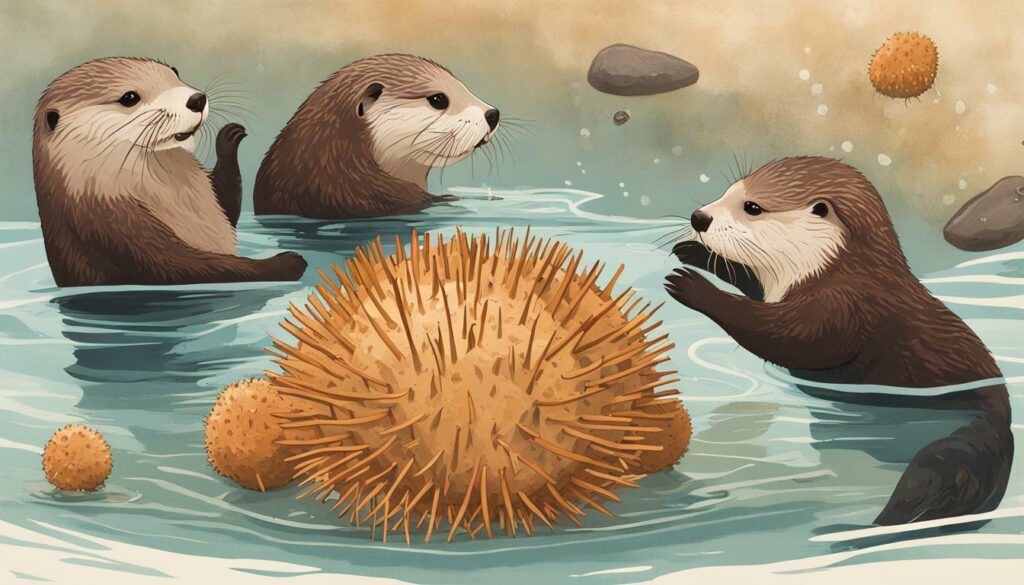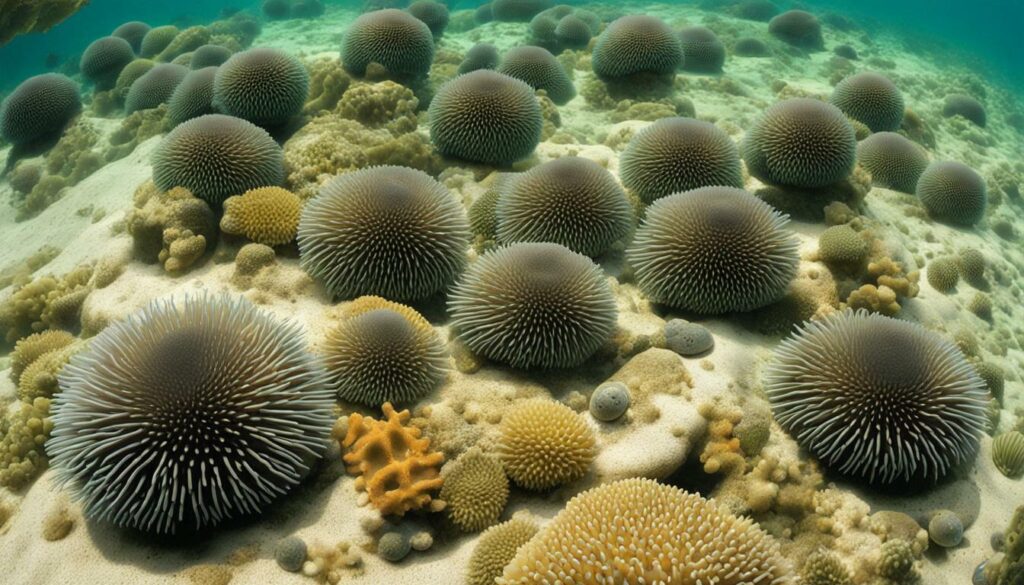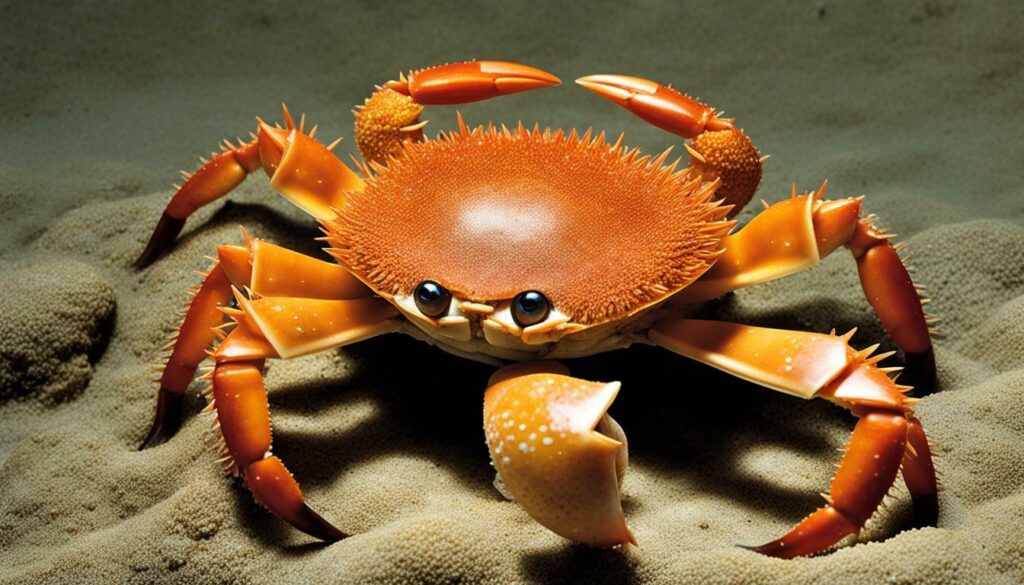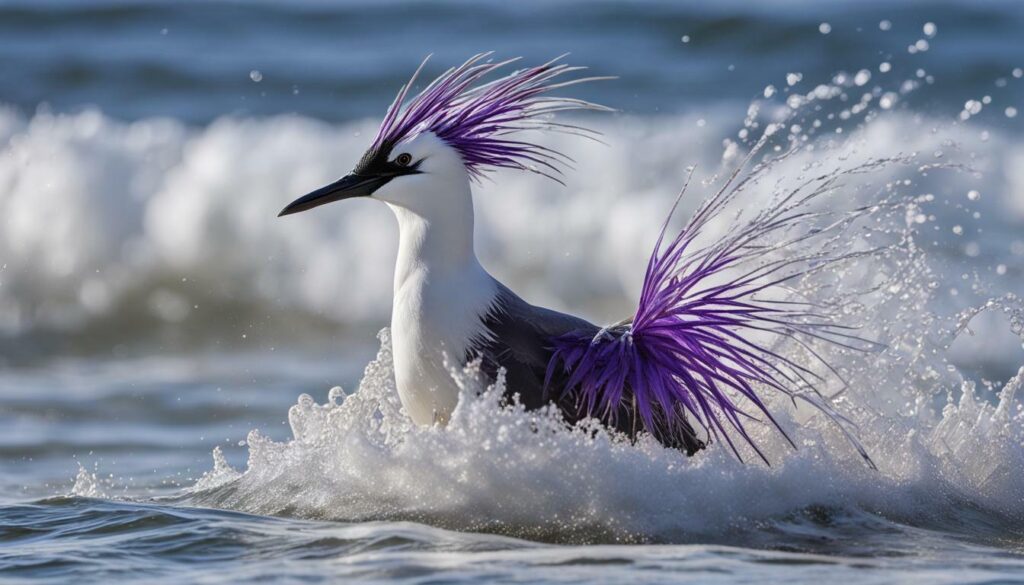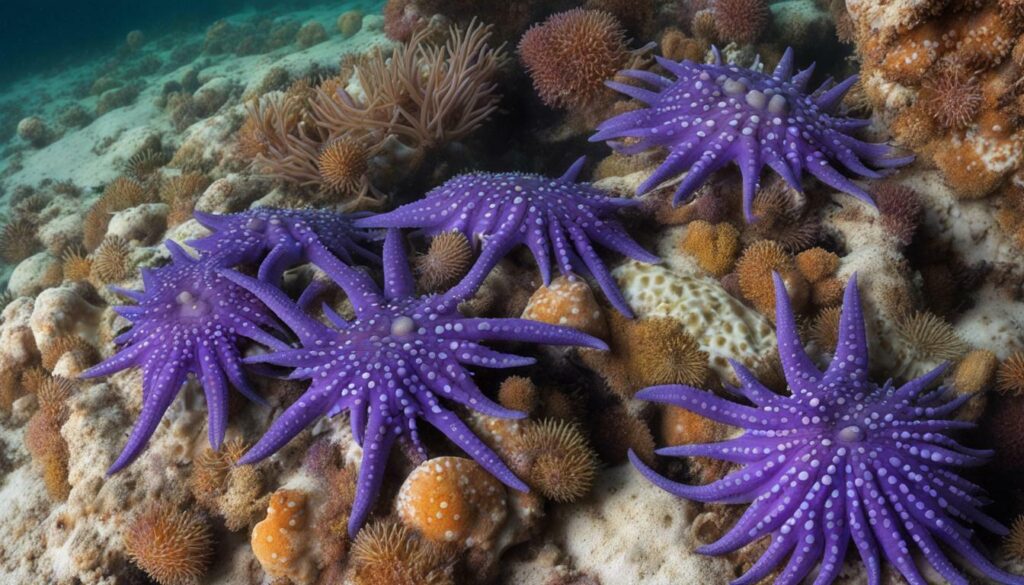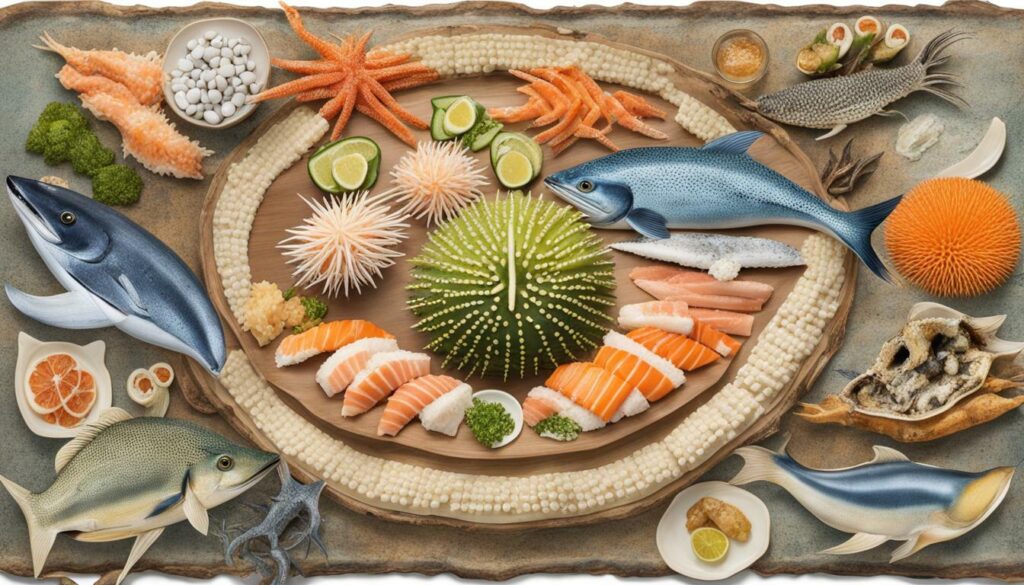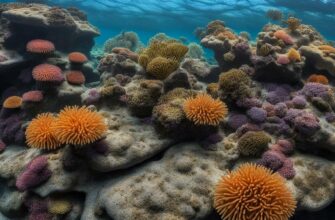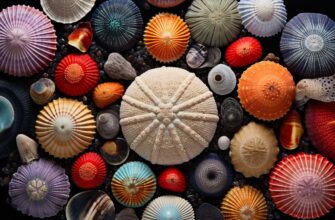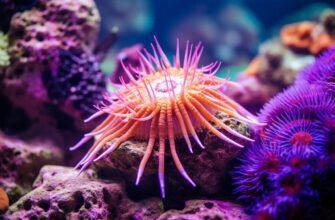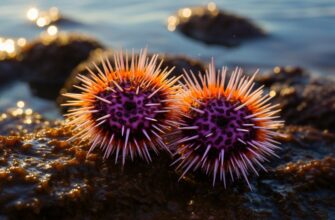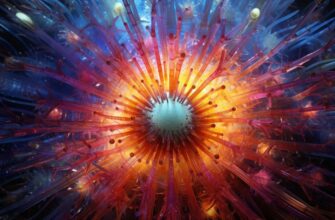Sea urchins are fascinating creatures that play an important role in the ocean ecosystem. They can be found in all of the world’s oceans, from the shallow waters near the shore to the deep sea trenches. While sea urchins are known for their spiny exterior, they are also a source of food for many ocean animals.
Understanding the predators of sea urchins is crucial for maintaining the health of the ocean ecosystem. In this article, we will explore the different types of animals that consume sea urchins in the wild. From fish and sea otters to crabs and lobsters, we will take a closer look at the natural predators of these fascinating creatures.
- Key Takeaways:
- The Role of Sea Urchins in the Ecosystem
- The Role of Sea Urchins in the Food Chain
- Natural Predators of Sea Urchins
- Fish Predators
- Sea Otters
- Crabs and Lobsters
- Sea Birds
- Marine Mammals
- Fish Predators
- Sea Otters
- Crabs and Lobsters – Sea Urchin Predators
- Sea Birds
- Marine Mammals
- Sea Stars
- Human Consumption and Management
- Conclusion
- FAQ
- Q: What animals eat sea urchins?
- Q: What is the role of sea urchins in the ecosystem?
- Q: Which fish species eat sea urchins?
- Q: How do sea otters prey on sea urchins?
- Q: Do crabs and lobsters eat sea urchins?
- Q: Which sea birds consume sea urchins?
- Q: Do marine mammals eat sea urchins?
- Q: Can sea stars prey on sea urchins?
- Q: Are sea urchins consumed by humans?
Key Takeaways:
- Sea urchins are an important part of the ocean ecosystem.
- Many ocean animals consume sea urchins as part of their diet.
- Understanding sea urchin predators is important for maintaining the balance of the ocean ecosystem.
The Role of Sea Urchins in the Ecosystem
Sea urchins play a crucial role in maintaining the balance of the ocean ecosystem. As herbivores, they graze on algae, kelp, and other marine vegetation, preventing overgrowth that can lead to ecosystem collapse.
In addition to their role as grazers, sea urchins provide food for a wide range of predators, from fish to marine mammals. These predators help to regulate the sea urchin population, preventing overgrazing and ensuring the health of the entire ecosystem.
For example, in areas where sea otters are present, their consumption of sea urchins helps to keep kelp forests healthy. Without sea otters, sea urchins would overgraze on the kelp, which would in turn lead to a reduction in the number of fish and other marine species that rely on the kelp as a habitat.
Overall, sea urchins are an important factor in maintaining the delicate balance of ocean ecosystems. Their role as grazers and prey helps to ensure the health and sustainability of the ocean’s many inhabitants.
The Role of Sea Urchins in the Food Chain
Sea urchins occupy an important place in the ocean food chain. As herbivores, they occupy a position between primary producers (such as algae and kelp) and primary consumers (such as fish and marine mammals).
Sea urchins are also a vital source of food for a wide range of predators, including fish, sea otters, crabs and lobsters, sea birds, marine mammals, and even some species of sea stars.
However, sea urchins are not just prey. They are also important predators themselves, feeding on algae and kelp and helping to maintain the health of the ocean ecosystem.
In short, sea urchins occupy a crucial position in the marine food chain, and their role as both prey and predator helps to maintain the balance of the entire ecosystem.
Natural Predators of Sea Urchins
Sea urchins, despite their spiny exterior, are a popular prey item for many animals in the ocean. In fact, sea urchins are an important part of the food chain in many marine ecosystems.
Various animals prey on sea urchins in their natural habitats. These predators play an essential role in maintaining the balance of the ocean ecosystem.
Fish Predators
Several fish species feed on sea urchins. Triggerfish are known to consume sea urchins by flipping them over and attacking the softer underside. Pufferfish are also known to eat sea urchins, using their sharp beaks to penetrate the spiny exterior. Certain species of wrasse also consume sea urchins as part of their diet.
| Fish species | Sea urchin consumption method |
|---|---|
| Triggerfish | Flip over sea urchins and attack the softer underside |
| Pufferfish | Use their sharp beaks to penetrate the spiny exterior |
| Wrasse | Consume sea urchins as part of their diet |
Image source:
Sea Otters
Sea otters are iconic marine mammals known for their voracious appetite for sea urchins. Sea otters crack open the hard shells of sea urchins with rocks, using their teeth to scoop out the soft interior. In kelp forest ecosystems, sea otters play a crucial role in controlling sea urchin populations and preserving the health of the ecosystem.
Crabs and Lobsters
Crabs and lobsters are also known to prey on sea urchins. Green sea urchin predators, such as the California spiny lobster and the purple shore crab, use their strong claws to break open the shells of sea urchins before consuming the soft insides.
Sea Birds
Certain species of sea birds, such as seagulls and cormorants, also feed on sea urchins. These birds use their sharp beaks to pierce the spiny exterior and access the soft insides.
Marine Mammals
Marine mammals such as seals, dolphins, and whales are known to consume sea urchins as part of their diet. In some cases, sea urchins make up a significant portion of these animals’ diets, especially in areas where other sources of food are scarce.
Understanding the predators of sea urchins and their place in the food chain is crucial for maintaining the balance of the ocean ecosystem. These predators help regulate sea urchin populations and prevent overgrazing in kelp forests, ensuring the health and longevity of the ecosystem.
Fish Predators
Fish are some of the most common predators of sea urchins in their natural habitats. Many fish species consume sea urchins as part of their diet, including triggerfish, pufferfish, and certain species of wrasse.
Triggerfish have specialized teeth that allow them to easily crack open the hard exoskeleton of sea urchins. Pufferfish, on the other hand, have strong jaws that can crush the spines and shells of sea urchins, making them an effective predator. Certain species of wrasse have also been known to feed on sea urchins, either by using their mouths or specialized teeth to break them open.
The consumption of sea urchins by fish is an important part of the ocean food chain and ecosystem. However, overfishing of certain fish species can lead to imbalances in the ecosystem and negative impacts on sea urchin populations. It is important to manage fisheries in a sustainable way to ensure the health of ocean ecosystems.
Sea Otters
Sea otters are one of the most well-known predators of sea urchins. They are a keystone species in kelp forest ecosystems, which means they play a critical role in maintaining the balance of the food chain and protecting the health of the ecosystem. Sea otters primarily feed on sea urchins, and their impact on urchin populations can have a significant effect on the entire ecosystem.
Sea otters use their strong teeth to crack open the hard shells of sea urchins, exposing the soft flesh inside. They will also consume other prey, such as crabs, clams, and abalone. However, sea urchins make up a significant portion of their diet, and their hunting behavior can help control urchin populations, which in turn can prevent overgrazing of kelp forests.
According to studies, the presence of sea otters in a kelp forest can increase the diversity of species, as well as the abundance of other prey, such as rockfish and lobsters. This is because sea otters prevent sea urchins from overgrazing on kelp, which provides crucial habitat for a variety of marine organisms.
Fun fact: Sea otters hold hands while sleeping to prevent themselves from drifting away from each other in the water.
“By eating sea urchins, a keystone predator like the sea otter can help maintain the balance of an entire ecosystem.”
Crabs and Lobsters – Sea Urchin Predators
Along with fish and marine mammals, crabs and lobsters also feast on sea urchins. Their powerful claws make it easy for them to crack open the hard shells of the sea urchins.
One example of a crab that preys on sea urchins is the green sea urchin predator crab, which is found in the eastern Pacific Ocean. These crabs have specially adapted chelae, or claws, that are strong enough to break open the spines and test of the sea urchin, allowing them to access the nutritious flesh inside.
Lobsters also consume sea urchins, and in some areas, their predation on sea urchins has been shown to have a positive impact on kelp forest ecosystems. Research has found that in areas where sea otters, a major predator of sea urchins, are absent, lobsters can take on the role of controlling sea urchin populations and promoting the growth of kelp forests.
Sea Birds
Sea birds, such as seagulls and cormorants, are also known to consume sea urchins as part of their diet. Seagulls have been observed dropping sea urchins from a height to crack open their spiny shells and access the soft flesh inside. Cormorants, on the other hand, dive underwater to catch sea urchins and other prey.
While sea birds may not be the primary predators of sea urchins, they still play a role in controlling their population. In fact, a study conducted in Japan found that cormorants were responsible for a significant decline in the population of the green sea urchin, a species considered a pest in many areas due to its ability to overgraze kelp forests and disrupt the ecosystem.
“Sea birds have been observed dropping sea urchins from a height to crack open their spiny shells and access the soft flesh inside.”
Marine Mammals
Marine mammals also play a significant role in the consumption of sea urchins. These creatures, which include seals, dolphins, and whales, are known to dine on sea urchins as part of their diet.
Seals are particularly fond of sea urchins and can be found hunting for them in kelp forests. They use their whiskers to detect the movements of the sea urchins and then dive down to capture them.
Dolphins, on the other hand, use their echolocation abilities to locate schools of fish that often include sea urchins. They then use their speed and agility to chase down their prey and consume them.
Whales, such as humpbacks and gray whales, are known to feed on sea urchins when they are available. They typically consume large quantities of the creatures in one sitting, which can have a significant impact on local sea urchin populations.
Overall, marine mammals are important predators of sea urchins and contribute to the maintenance of ocean ecosystems.
Sea Stars
Sea stars, also known as starfish, are another predator of sea urchins in their natural habitat. They have a unique feeding behavior where they use their tube feet to pry open the sea urchin’s spines and pull apart its shell to reach the soft and nutritious inner parts.
Sea stars can be a major threat to sea urchin populations in areas where their numbers are high. For example, the sunflower star, which can have up to 24 arms and grow up to 3 feet in diameter, is a voracious predator that can consume multiple sea urchins in a single meal.
However, sea stars can also help to regulate sea urchin populations in areas where they have been overfished. In some regions, efforts have been made to protect and conserve sea star populations in order to control sea urchin numbers and promote the growth of kelp forests.
Like many other sea urchin predators, sea stars are an important part of the ocean ecosystem, and their role in maintaining balance and diversity should not be underestimated.
Human Consumption and Management
While sea urchins are primarily consumed by predators in the ocean, they are also a delicacy for humans in many cultures. In Japan, uni (sea urchin roe) is a prized ingredient in sushi and other dishes.
Sea urchin fisheries exist in many parts of the world, and the industry is closely monitored and regulated to prevent overfishing. The harvesting of sea urchins involves removing them from the ocean floor, either by hand or with tools, and transporting them to processing facilities.
It’s important for the management of sea urchin fisheries to consider the impact of harvesting on local ecosystems. Overfishing can result in a decline in sea urchins and lead to imbalances in the food chain. In addition, the removal of sea urchins can have a negative impact on kelp forests, as they are a natural predator of the kelp-eating sea urchins.
| Pros | Cons |
|---|---|
| Sea urchins are a source of income for fishing communities. | Overfishing of sea urchins can lead to imbalances in the ecosystem. |
| The harvesting of sea urchins is strictly regulated to prevent overfishing. | The removal of sea urchins can negatively impact kelp forests. |
| Sea urchins are a delicacy in many cultures. | Harvesting of sea urchins can be harmful to local habitats and lead to decreased biodiversity. |
Overall, the consumption and management of sea urchins requires a delicate balance between economic interests and environmental considerations. Understanding the natural predators of sea urchins is crucial for maintaining healthy ocean ecosystems and sustainable fishing practices.
Conclusion
In conclusion, understanding the predators of sea urchins is crucial for maintaining the health of ocean ecosystems. Sea urchins play an important role in the food chain, and many species rely on them as a source of food. Fish, sea otters, crabs, lobsters, sea birds, marine mammals, and even sea stars all prey on sea urchins as part of their diet. As humans, we also consume sea urchins, but there is a need for responsible management in fisheries to ensure sustainable harvesting.
By learning about sea urchin predators, we can better appreciate the complexity and interconnectedness of the ocean ecosystem. It is important to recognize the impact that human activities, such as overfishing and pollution, have on the balance of this fragile ecosystem. We must take action to protect ocean life and ensure that future generations can continue to enjoy the beauty and bounty of the sea.
FAQ
Q: What animals eat sea urchins?
A: Sea urchins have several natural predators in the ocean. Some common ones include fish, sea otters, crabs and lobsters, sea birds, marine mammals, and sea stars.
Q: What is the role of sea urchins in the ecosystem?
A: Sea urchins play a vital role in maintaining the balance of the ocean ecosystem. They help control the population of certain algae and promote the growth of kelp forests.
Q: Which fish species eat sea urchins?
A: Fish species such as triggerfish, pufferfish, and certain species of wrasse are known to consume sea urchins as part of their diet.
Q: How do sea otters prey on sea urchins?
A: Sea otters are skilled predators of sea urchins. They use their dexterous paws to grab and consume them, often cracking open the shells with rocks or hard surfaces.
Q: Do crabs and lobsters eat sea urchins?
A: Yes, certain species of crabs and lobsters, including the green sea urchin predators, feed on sea urchins as part of their diet.
Q: Which sea birds consume sea urchins?
A: Species such as seagulls and cormorants are known to feed on sea urchins as a source of food.
Q: Do marine mammals eat sea urchins?
A: Yes, marine mammals such as seals, dolphins, and whales consume sea urchins as part of their diet.
Q: Can sea stars prey on sea urchins?
A: Sea stars have a unique feeding behavior and are able to consume sea urchins by prying them open with their tube feet and then digesting them.
Q: Are sea urchins consumed by humans?
A: Yes, sea urchins are consumed by humans in certain cultures and are considered a delicacy in seafood cuisine. However, their management in fisheries is important to prevent overharvesting.



